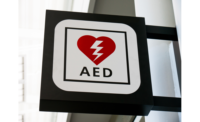CPR goes high-tech

A high-quality telecommunicator CPR (T-CPR) program can save more lives from out-of-hospital cardiac arrest and strengthen the chain of survival, according to a new advisory from the American Heart Association (AHA) published in Circulation, a journal of the AHA, today.
Each year in the United States, an estimated 350,000 people experience sudden cardiac arrest in out-of-hospital environments. Sudden cardiac arrest is the unexpected loss of heart function, breathing and consciousness and commonly the result of an electric disturbance in the heart. Only about 1 in 10 victims survives this dramatic event. Successful resuscitation of cardiac arrest victims requires immediate response to improve their chance of survival.
Telecommunicators, including dispatchers and emergency call takers, are the true first responders and a critical link in the cardiac arrest chain of survival. Working with the 9-1-1 caller, telecommunicators have the first opportunity to identify a victim in cardiac arrest and provide initial care by delivering CPR instructions while quickly dispatching emergency medical services.
“A telecommunicator who effectively engages the caller, identifies the cardiac arrest, and coaches effective CPR could double or triple the chances of survival from sudden cardiac arrest,” said statement author Michael Kurz, M.D., associate professor of the departments of emergency medicine and surgery at the University of Alabama at Birmingham. “Through these actions, the telecommunicator can make the difference between life and death.”
The policy statement describes the public health impact of out-of-hospital cardiac arrest, provides guidance and resources to construct and maintain a T-CPR program, outlines the minimal acceptable standards for timely and high-quality delivery of T-CPR instructions, and identifies strategies to overcome common implementation barriers to T-CPR. The T-CPR process was previously described as dispatch CPR, dispatch-assisted CPR or telephone CPR.
The statement takes the recommendations from the previous International Liaison Committee on Resuscitation and AHA statements, which addressed improved results from T-CPR such as an increase in lay rescuer CPR and improved out-of-hospital cardiac arrest outcomes, and outlines the components that are needed to implement a science-based T-CPR program within a community.
An effective T-CPR program depends on several important operational commitments by an emergency response system, such as:
- Providing a high-quality program that includes measurement and performance goals,
- Providing initial and ongoing education in T-CPR for all telecommunicators,
- Conducting effective and continuous quality improvement (QI),
- Integrating QI with an emergency medical services agency,
- Designating a medical director, and
- Recognizing outstanding performance.
Effective T-CPR also depends on well-prepared professionals trained to elicit information quickly, interpret that information and provide direction. A QI process should be established with clear, objective data sets, and specific individuals should be identified who are accountable for conducting reviews under the guidance of a physician to drive quality care.
”A program of T-CPR offers the safest, most cost-efficient and most effective approach to substantially increase community lay rescuer CPR,” said Kurz, the immediate past-chair of the Emergency Cardiac Care subcommittee on systems of care for the AHA. "Thousands of additional lives can be saved each year if we can achieve this goal.”
Looking for a reprint of this article?
From high-res PDFs to custom plaques, order your copy today!






